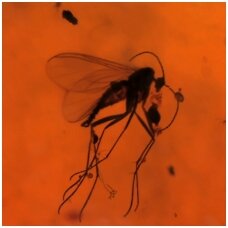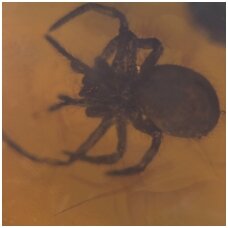Amber - fossil resin
-
The Baltic amber, succinct, formed of amber pine tress – pinus succinifera – which in the Eocene period (55-40 million years ago) grew in south slopes and plains of Scandinavia. In the old Baltic amber tertiary forests conifers, palms, oaks, beeches, elms, chestnuts, willows, cinnamons, magnolias and olives, also mushrooms, mosses and lichens were growing. The climate was mainly warm, turning to subtropical. Possible reasons for pathological overproduction of resin in amber trees were consequences of natural disasters and climate changes: lightning, early frosts, cloudbursts, increased concentration of soil salts and air humidity. Because of intensive resin exertion in the beginning of the Oligocene period amber forests were growing sickly very slowly.
The process of amber formation of resin includes many lasting changes and stages: polymerization, oxidation, isomerization, fermentation and the so-called ripeness process in alkaline soil of the Sambian peninsula, outputs of the Eocene period. Here resin had once and for all turned into amber.
Very few inclusions of plants are found – about 300 pieces that make approximately 0.4%. In the Palanga amber Museum only those remnants of plants remained whole that had been totally covered by resin and had no contact witch air.
Every piece of amber is of its early form, which reveals the process of its formation. If weathering had not damaged amber, water and ice, it could have retained its early form unchanged. Amber pieces are divided into those that had formed inside the trunk. The former are in the form of a drop (79%) amber stalactites, drops, icicles, pieces of amber in amber. The latter are in the form of the inside trunk (12%): pieces of resin in the bark or between the trunk and the bark. These are bark lamellae, pieces with bits of the bark.



